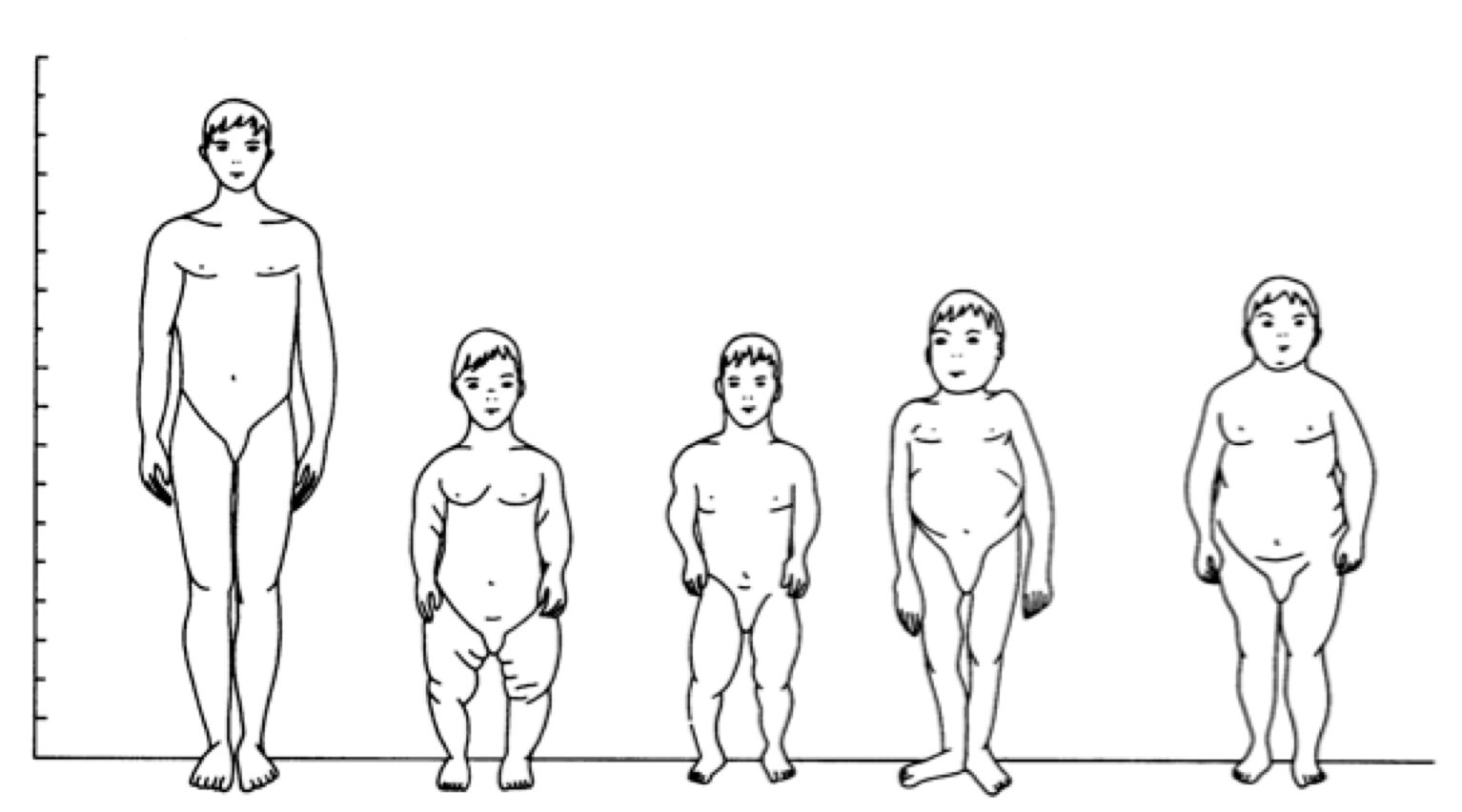The term “legal midget” is often used to refer to individuals with a specific type of short stature, typically classified as dwarfism. While the terminology may vary across countries, the height of midgets is generally defined within medical and legal contexts based on specific height thresholds. In most cases, individuals with a height of 4 feet 10 inches (147 cm) or below are classified under this category, depending on their region or country. This classification applies equally to both female midgets and male midgets, though average heights may slightly differ between genders.Understanding the size of midgets and their classification is important in medical and societal contexts. It ensures access to necessary healthcare, legal protections, and social support systems tailored to individuals with dwarfism. While height is the primary factor, the medical criteria for classification also consider other physical characteristics and genetic markers associated with dwarfism.
Table of Contents
ToggleThe Average Height Percentage of Legal Dwarfs
On a global scale, the height of midgets or individuals with dwarfism represents a very small percentage of the population. Generally, less than 1% of the global population falls within this category. This figure highlights the rarity of the condition, which is primarily caused by genetic factors or specific medical conditions affecting bone growth.The size of midgets varies slightly across populations due to differences in genetics, nutrition, and healthcare access. For instance, in some regions, the average height of midgets might be slightly lower or higher than the global standard. By studying these variations, researchers can gain a deeper understanding of the factors influencing height development in people with dwarfism.
Female Midgets
Female midgets generally have an average height slightly below their male counterparts due to biological differences in bone growth and hormonal factors. The size of midgets among females typically ranges between 4 feet (122 cm) and 4 feet 9 inches (145 cm), depending on the specific form of dwarfism and individual health factors. It’s important to note that female midgets often face unique challenges, such as accessing healthcare tailored to their needs or managing pregnancy with specific medical conditions.Understanding the height of midgets among females also plays a role in designing supportive environments and medical systems that cater to their specific requirements. By addressing these needs, societies can foster greater inclusivity and support for women with dwarfism.Male Midgets
Male midgets, on average, tend to be slightly taller than their female counterparts due to differences in growth patterns and bone density. The height of midgets among males generally falls between 4 feet 2 inches (127 cm) and 4 feet 10 inches (147 cm). While the average size of midgets may vary across populations, males with dwarfism often require specialized orthopedic care to address issues related to bone development and joint function.By analyzing the height of midgets among males, healthcare providers can develop better diagnostic and treatment plans. These measures help address the specific medical challenges faced by male midgets, such as increased risks of spine curvature or joint problems.Global Standards for Dwarfism Height
The classification of dwarfism and the associated height of midgets can vary across countries, but most medical and legal systems use similar thresholds. Globally, individuals with a height of 4 feet 10 inches (147 cm) or shorter are generally classified as having dwarfism. This threshold applies universally, regardless of whether the individual is a male midget or a female midget, although specific medical evaluations may adjust this standard slightly.The size of midgets is primarily determined by medical conditions such as achondroplasia, one of the most common causes of dwarfism. These conditions affect bone growth, resulting in shorter stature and other characteristic physical traits. While the term “midget” is often used colloquially, healthcare professionals prefer to use terms like “short stature” or “dwarfism” to ensure a respectful and inclusive dialogue.
Medical Threshold for Dwarfism by Percentage
From a medical perspective, dwarfism is often defined as having a height that falls significantly below the average for a population—usually in the bottom 2% or less. This statistical measurement ensures that only individuals with clinically significant short stature are classified under dwarfism. The height of midgets, therefore, must meet specific medical criteria to ensure proper diagnosis and treatment.In countries with detailed medical databases, this threshold helps healthcare providers identify individuals who may need special interventions or accommodations. By understanding the size of midgets within a population, policymakers and medical institutions can create programs that address their unique health and societal needs.The Role of Genetics in Dwarfism Statistics
Genetics plays a crucial role in determining the size of midgets and the height of midgets in different populations. The most common form of dwarfism, achondroplasia, is caused by mutations in the FGFR3 gene. This genetic mutation affects bone growth, leading to shorter stature while preserving proportional body parts in most cases. Both female midgets and male midgets can inherit this condition if one or both parents carry the mutated gene.Interestingly, about 80% of cases of dwarfism result from spontaneous genetic mutations, meaning that affected individuals are born to parents with average height. This highlights the complex interplay between genetic inheritance and random mutations. Understanding these factors helps researchers better predict the size of midgets and the likelihood of the condition appearing in future generations.
Legal Criteria and Height Proportions in Dwarfism
The legal classification of dwarfism and the associated height of midgets often depends on both medical and societal factors. In most countries, individuals with a height of 4 feet 10 inches (147 cm) or shorter meet the legal criteria for dwarfism, which grants them access to specific rights and protections. These criteria are not only based on physical measurements but also take into account the medical conditions that contribute to short stature, such as genetic disorders or skeletal dysplasias.The size of midgets as a recognized category ensures that affected individuals can benefit from accommodations in workplaces, educational institutions, and public spaces. For example, many legal systems offer disability benefits to individuals with dwarfism to address challenges they may face in daily life. By formalizing the legal criteria, societies can create a more inclusive environment for both female midgets and male midgets.
How Height Deviations in Dwarfism Are Measured
Height deviations in dwarfism are measured using statistical tools that compare an individual’s height to population averages. The size of midgets is typically classified as being more than two standard deviations below the average height for their age and gender. For example, if the average adult height in a given population is 5 feet 7 inches (170 cm), individuals with a height below 4 feet 10 inches (147 cm) may be classified as having dwarfism.Medical professionals also use growth charts and genetic testing to determine the underlying causes of short stature. For both female midgets and male midgets, early diagnosis is essential to manage potential health issues and ensure appropriate medical care. These measurements not only help in diagnosing dwarfism but also provide valuable data for tracking the prevalence and distribution of the condition globally.
Countries with the Highest Percentage of Legal Dwarfs
The percentage of individuals classified under dwarfism varies by region due to genetic diversity, environmental factors, and healthcare access. While the global height of midgets remains consistent at less than 1% of the total population, some countries report slightly higher percentages due to unique genetic patterns or cultural factors. For example, in regions where consanguineous marriages are more common, the prevalence of genetic conditions linked to dwarfism may be higher.Countries with strong healthcare systems, such as the United States and many European nations, are better equipped to diagnose and support individuals with dwarfism, ensuring accurate statistics on the size of midgets. By contrast, in developing regions, the true prevalence may be underreported due to limited access to medical care and genetic testing. This highlights the importance of international collaboration to improve understanding and support for individuals with dwarfism worldwide.


